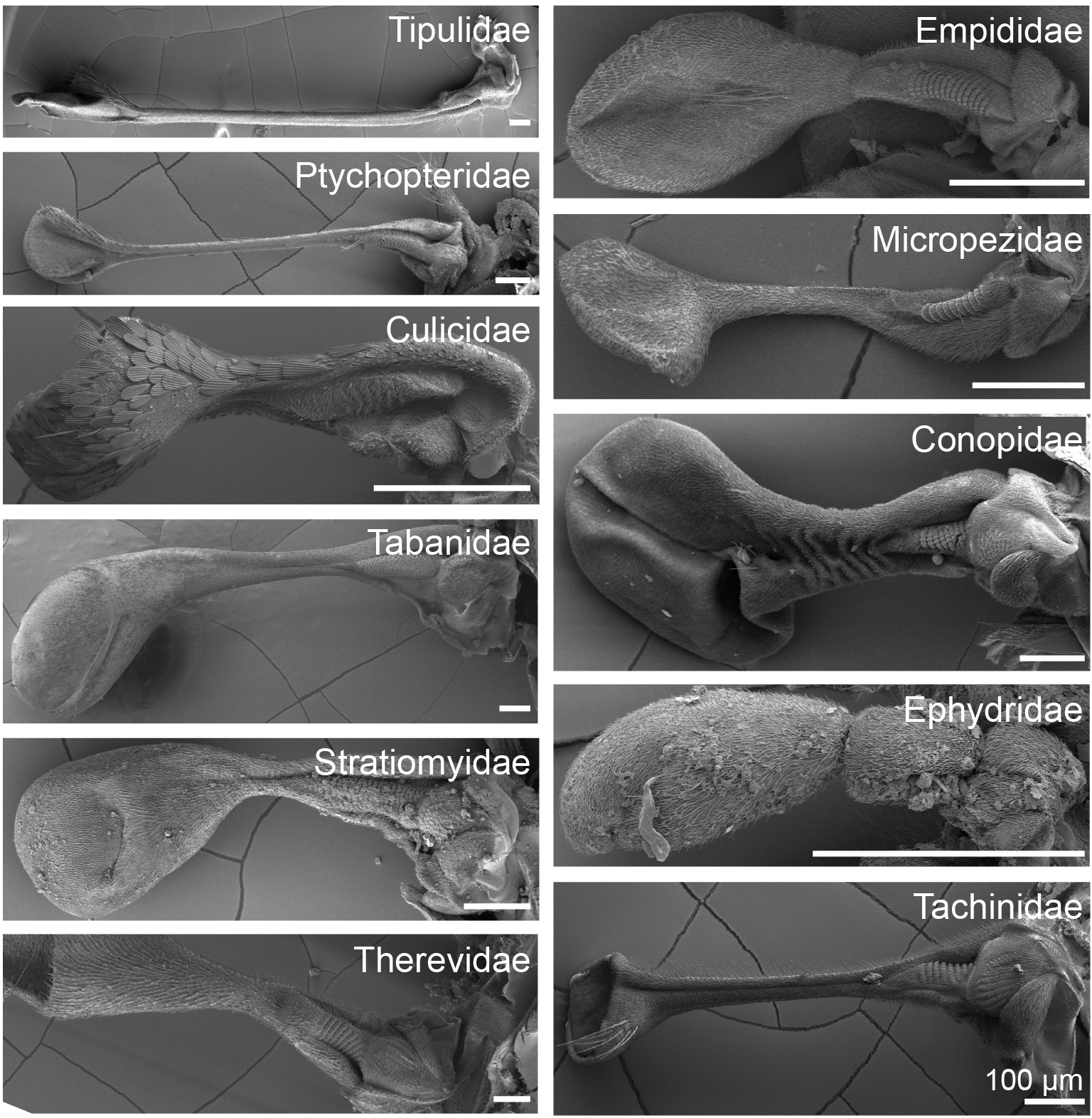Comparative morphology of proprioceptive sensors

One of the primary specializations of true flies (order Diptera) is the modification of the hind wings into club-shaped halteres. Although the halteres do not generate lift, they experience multiple inertial forces during flight. Mechanosensory cells at the haltere base, called campaniform sensilla, detect the cuticular deformations caused by these forces. The haltere therefore functions as a proprioceptive organ that is important in flight. If the halteres are removed, flies are unable to maintain stable flight.
Campaniform sensilla function by coupling deformation of a flexible cuticular dome to mechanical strain detected by an underlying mechanosensitive neuron. As a result, the surface morphology and location of these sensors will greatly impact the forces they can detect. However, previous to my work, it was unknown how the shape and distribution of these sensors varied among different dipteran species.
I dissected hundreds of halteres from more than 40 families across the dipteran order and quantitatively mapped their fine and gross sensory structures using a scanning electron microscope. I found that several features of haltere morphology correlate with dipteran phylogeny, including haltere shape and sensilla organization. I also discovered surprising variation in sensilla morphology. Because haltere function is intimately tied to its biomechanical properties, these variations in shape, morphology, and organization likely impact their function. These results provide insight into the evolution of a highly specialized proprioceptive organ and will form the basis for future studies on haltere sensory function.
This work was completed at the American Museum of Natural History with Dr. David Grimaldi and at Case Western Reserve University with Dr. Jessica Fox.